Top 10 Most Important Cars of All Time

Cars have shaped the world we live in by giving mobility to the masses. Over the past century and beyond there have been plenty of revolutionary vehicles, not to mention quite a few clunkers.
Throughout its history the automotive industry has produced literally dozens of revolutionary cars. But remember, there are only 10 spaces on this list so everything won’t fit. Did your beloved Plymouth Superbird make the cut? What about Honda’s scrappy little CR-X? Keep on reading to find out what the Top 10 Cars of All Time really are.
No list of important vehicles is complete without the Ford Model T. Thanks to ruthless cost cutting and the moving assembly line more than 15 million of them were produced between 1908 and 1927. As the first truly affordable car, Henry’s Tin Lizzie literally put the world on wooden-spoke wheels.
With a 20 horsepower four-cylinder engine under its louvered hood the car was capable of a top speed of about 45 miles an hour. That’s laughably slow by today’s standards but at the time it was more than adequate. At their smoothest the dirt roads of the day were as furrowed as a plowed field.
The Ford Model T, also called the “universal car,” was simple and reliable. It was designed to be operated and maintained by farmers living in rural areas. As such it allowed them to travel to place they had never seen before.
Not only did the car forever change the way people got around it transformed the landscape of America. Highways, gas stations, garages and roadside lodging were built to serve the needs of the burgeoning motorist class.
At its introduction the Model T was priced at $850, but Henry Ford continually simplified the manufacturing process and passed the saving on to his customers. By the time it went out of production 19 years later the car sold for as little as $260. How’s that for value?
The Chrysler Airflow is an Art Deco blast from the Great Depression. As its name suggests, this car’s biggest claim to fame is an aerodynamic body.
Slippery shapes are taken for granted today with automakers pushing to reduce the aerodynamic drag of their vehicles to improve fuel efficiency. Every new car sold today has been specially massaged to slice through the wind, but that wasn’t the case back in the ’30s.
Unlike its contemporary competition, the Airflow’s shape was actually proven in the wind tunnel. Chrysler wasn’t necessarily the first to do this, but at the time it was seriously innovative for a mass-produced passenger car.
Beyond aero, the Airflow was pioneering in other ways as well. Its structure was built out of tubular steel, which made it light and strong. The engine was positioned directly over the front axle, a move that helped increase interior spaciousness. It also came standard with hydraulic brakes, which were safer than their mechanical counterparts, and it delivered a velvety-smooth ride for its time. Chrysler had “cab-forward design” long before it started pushing the idea with its LH cars in the 1990s.
Airflows were sold under the Chrysler, De Soto and Imperial brands but sadly the whole idea was a commercial failure. They were expensive and the buying public wasn’t fond of the futuristic design.
Airflows rolled onto the market in 1934 but the party was over by ‘37, a painfully short run for such a distinctive and innovative auto.
With Hitler, Nazis and Ferdinand Porsche the Beetle’s back-story reads like the screenplay of a great thriller movie. Skipping the esoteric details, Volkswagen means “people’s car,” and from its inception it was meant to put a new generation on wheels, just like the Ford Model T had done two decades before.
Conceived of and constructed by Porsche under der Führer’s watchful eye, the first prototype debuted in February 1936. Despite its strange looks the littler car featured a number of innovations. It was rear-wheel drive, but the engine was mounted in the back as well, ostensibly to maximize interior space. The little horizontally opposed four-cylinder was also air cooled, which further simplified things. Additionally, passengers benefitted from a smoother ride courtesy of four-wheel independent suspension.
All of this was very impressive for the mid ‘30s, but the car’s true potential wasn’t realized for years to come. A little something called World War II got in the way.
Throughout the Beetle’s long lifespan it remained largely the same. Sure, more powerful engines and other improvements were added along the way but the basic structure was unchanged.
While the rest of the automotive world moved forward time sees to have forgotten the Beetle. Defying logic the original version of the car was produced in Mexico until 2003. All told more than 21 million were built, making it the most produced single version of a car in history. Not a bad run for a design conceived of in the 1930s.
It seems every country has its an iconic vehicle. Germany’s got the beetle, France has Citroen’s 2CV, and America the Model T. For our friends across the Atlantic it’s the BMC Mini.
British Motor Corporation introduced this iconic passenger car in 1959. Initially it was sold under the Morris and Austin brands but Mini would eventually become its own marque a decade later.
The aptly named vehicle was brought to market as the result of a fuel shortage. Britain and France’s involvement in the Suez Crisis of 1956 irked the king of Saudi Arabia and he suspended petroleum shipments to the European countries. Understandably this resulted in gas rationing, which put a serious damper on motoring in the U.K.
Fortunately, driving enthusiasts and the general public were soon treated to a revolutionary new car that put the wasteful consumption on notice.
Responding to the situation at hand, the folks at BMC conceived of the Mini. At just 10 feet in length it had a tiny footprint but it could still seat four adults. Fuel efficiency was equally remarkable.
It delivered these virtues thanks to some clever innovations. Like many cars before the Mini was front-wheel drive, but BMC’s big improvement to this layout had to do with how the engine was mounted. It was positioned transversely under the hood, meaning side to side rather than front to back. This allowed for as much interior room possible. It’s the same engine layout almost all front-wheel-drive vehicles use today.
Engineers also pushed the Mini’s suspension out to the corners of the vehicle, which further maximized interior volume. The result of the lightweight, low-slung design was go-kart handling, another virtue that helped cement its place in the automotive history books.
We know what you’re saying, “The Toyota Prius? This is supposed to be a list of the top 10 cars of all time!” Well, it is and no, this is not a mistake. Like it or not hybrids are important and they’re here to stay.
So what’s the significance of the Prius? Well, for starters it was the world’s first mass-produced battery-electric vehicle. Introduced in 1997, this homely little fuel miser has gone on to become a hit around the world.
In the U.S. alone the company sold more 200,000 of them through October. That makes it Toyota’s third most-popular model in America after the first-place Camry and the runner-up Corolla.
Prius is Latin for “to go before,” and this hypermiling hatchback certainly has. It’s spurred the competition on to offer their own hybrid vehicles. Companies from Ford to Kia now sell cars with electrified powertrains.
Now in its third generation, the success of the original Prius has spawned a variety of other models. Buyers can choose from a smaller version, the Prius C, a larger model in the form of the Prius V and even a plug-in variant.
Few cars on the road today have a performance pedigree that can match the Porsche 911s. Since its introduction in late 1964, it’s been a consistent winner on the racetrack and formidable opponent on the street. With nearly 50 years of history behind it, the 911 is one of the longest-standing sports car nameplates in production.
From day one it was designed to replace Prosche’s successful 356, which was based on the blue-collar Volkswagen Beetle. With the people’s car as its foundation, the 356 inherited a rear-mounted, air-cooled engine and treacherous swing-arm suspension.
Surprisingly, the company maintained much of that DNA with the 911. However, unlike its predecessor the new sports car featured a horizontally opposed six-cylinder powerplant instead of a four. It was also air-cooled and displaced just 2.0 liters. Output was 130 hp. A sophisticated rear suspension setup was also fitted to the car, fixing a major fault of its forerunner.
Today’s 911 is perhaps the quintessential sports car. More variants and racing models have been introduced over the last four and a half decades than can be counted. Perhaps as a nod to its heritage the car remained air-cooled until 1998.
Like it or not, autonomous cars are the future. Self-guided vehicles may seem like a pie-in-the-sky idea right now but they’re in the fast lane and will arrive before you know it.
Many automakers already offer different technologies that are stepping stones on the path to full autonomy. Things like adaptive cruise control and automatic braking are a glimpse of the future.
Self-driving cars promise to save time by preventing crashes and subsequent traffic backups; they can also reduce fuel consumption by following the most efficient route to a destination. Another feather in their computerized cap is that they can give seniors and the disabled more independence.
The idea shows lots of promise. Working outside of its wheelhouse, technology giant Google is surprisingly at the forefront of this vehicular revolution.
The Silicon Valley-based outfit has been developing its own driverless car for a few years now. Its team outfitted a Toyota Prius with a battery of video cameras, radar equipment and other sensors to great effect. So far they’ve racked up hundreds of thousands of autonomous miles with no crashes.
While their impact has not been felt yet, autonomous vehicles will be a game changer in the 21st century.
Minivans get a bad rap. They’re some of the most functional vehicles on the road, delivering generous cargo space in a reasonably sized, relatively fuel-efficient package. There’s really nothing better for carrying people and possessions.
Unfortunately though, enthusiasts decry their function-over-form ethos. Driving them is about as exhilarating as waiting in line at the Secretary of State, but what they lack in passion they more than make up for in usability.
While arguably not the first “minivans,” the Dodge Caravan and Plymouth Voyager combo nailed the basic formula and founded a new vehicle segment in America. Introduced in 1983 as ’84 models, these two car-based haulers were destined to rack up big sales numbers.
Well in excess of 12 million have been sold worldwide since their launch and they’re still popular with customers. So far this year the Pentastar brand has moved more than 200,000 minivans in North America, making the Dodge Caravan and Chrysler Town & Country two of its best-selling nameplates.
So far this list has covered cars like the Prius and Mini, practical, everyday vehicles that are efficient drive and totally mundane in their familiarity. The Bugatti Veyron is none of this.
Perhaps the most awe-inspiring production car ever built this ultra-luxurious coupe stickered for a cool €1 million when it was launched in 2006.
At first blush that sounds like an exorbitant figure, but a quick glance at the specifications list and it starts to seem almost reasonable. For starters the car is capable of exceeding 250 miles an hour if you can find a road that’s long enough and a driver sufficiently deranged to attempt the feat.
The Veyron is constructed of a mélange of exotic materials including carbon fiber and titanium. Its mid-mounted engine is a technological masterpiece. For starters it’s a W16 – think of two V8s joined at a common crankshaft. The unit displaces a gargantuan 8.0-liters and is pumped up by a quartet of turbos. Add it all up and the grand total is 1,001 metric horsepower. Did von Braun’s Saturn V rocket that hauled Apollo 11 to the moon generate this much thrust?
A seven-speed automatic transmission handles shifting duties and seems like an afterthought in the process. All-wheel-drive, a prerequisite with this much oomph on tap puts the power to the ground.
Toyota’s Corolla may be lacking in passion, but its family-focused merits spread out more abundantly than an all-you-can-eat buffet. Customers around the world have been eager to gobble up this small car for more than four decades.
Introduced in 1966, the Corolla is now in its 10th generation. To date it’s the bestselling nameplate on the planet, with about 40 million examples delivered. Reliability, comfort and fuel efficiency are but a few of the things this car has excelled at over its long history. And given that sales success Toyota shows no sign of stopping. The Corolla will almost certainly be around for another 10 generations, something that makes it one of the most significant cars in history.

Born and raised in metro Detroit, Craig was steeped in mechanics from childhood. He feels as much at home with a wrench or welding gun in his hand as he does behind the wheel or in front of a camera. Putting his Bachelor's Degree in Journalism to good use, he's always pumping out videos, reviews, and features for AutoGuide.com. When the workday is over, he can be found out driving his fully restored 1936 Ford V8 sedan. Craig has covered the automotive industry full time for more than 10 years and is a member of the Automotive Press Association (APA) and Midwest Automotive Media Association (MAMA).
More by Craig Cole





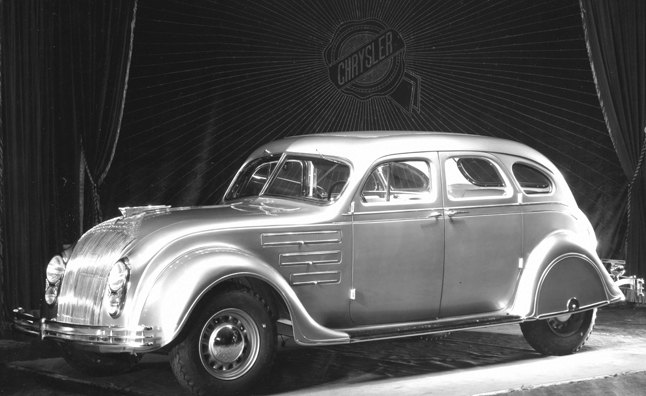




















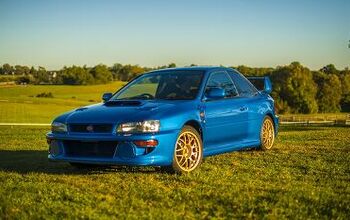


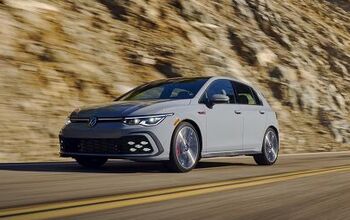
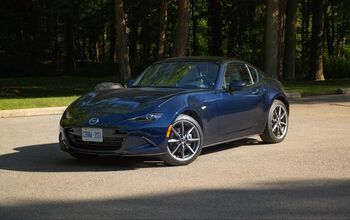







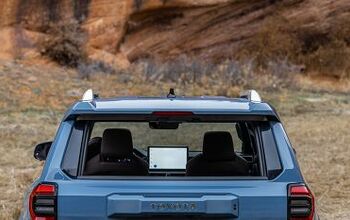

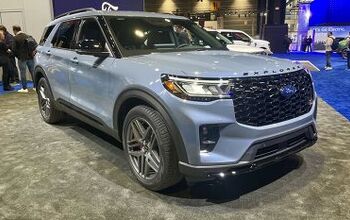
Comments
Join the conversation
To add to the Airflow's importance, the first car Toyota ever made was basically a copy of the Chrysler: the Toyota AA.
You're kidding me, where is the Citroen DS on this list?